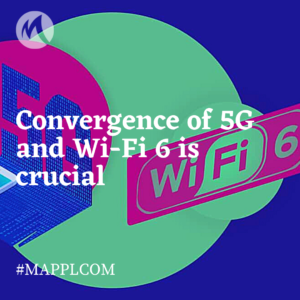Discussing the IP Future in 5G & Cloud Era: IPv6 Enhanced Innovation

The world seems to get used to new shapes and formats of dealing with what used to be everyday things, before imposed numerous pandemic restrictions. Almost all the major economic and social events are adjusted in their formats in order to ensure knowledge and opinions’ exchange within the required level of safety and security. So, one of the most recent discussions on “IPv6 Enhanced Innovation: Embracing the IP Future in 5G & Cloud Era” has taken place online as a webinar. The whole thing was endorsed by IPv6 Forum, ETSI and EANTC.
Despite the new online mode of the event, an expected scale of the previous conference was achieved, with a number of participants exceeding 200(!), who were mainly representing operators, vendors, standards organization, university and research institutions, and even governments. This year’s event was dedicated to sharing experience in the field of IPv6 deployment in Europe, major discussions were focused on real and potential benefits, the harshest challenges and related standardization progresses and successful business practices.
We have recently covered the topic of 5G competitive advantages and cloud era facilities: due to high complexity of the structure and enormous volume of clients, the overall number of connected nods is going to exceed 100 billion. Hence, it creates a necessity of eliminating IP addresses which are not sufficient. IPv6 is not only said to fundamentally solve this problem but is also designed to enhance scalability and flexibility of packets through extension headers which definitely correlates with the speed of the latest network generation’s deployment.
Another important stage of the concept’s development is SRv6 standard, which is generally based on IPv6. SRv6 standard document RFC8754, which designates the encapsulation layout of the SRv6 Segment Routing Header (SRH) was officially released in March by IETF, thus providing opportunities for a more global commercial use and omni-operability among different vendors and providers. Representatives of the IPv6 Forum, talking about IPv6+ (here a “plus” symbol refers to Enhanced Innovation combined with Artificial Intelligence tools for analyses, set by protocol innovation such as SRv6, BIER6, etc.), report that this solution is theoretically suitable for a range of smart technologies which demand extremally high quantities of connections as well as high level of quality. Among these cutting-edge concepts one can name VR, smart healthcare, autonomous driving, industrial automation and IoT. To handle increased requirements on intelligence, experience assurance and network automation, IPv6 solution has to be supplemented by some other innovative tools in order to build promising “IPv6+” networks.
Among the most significant benefits of IPv6+ the most significant are the following: network quality visualization and automatic O&M (which drastically decreases analysis-related time and costs), specificated channels for healthcare, VR, education, healthcare, and electric power (which change the existing business model from bandwidth selling to delivering differentiated services) and, finally, automated service provisioning across domains. Many experts now see SRv6 as a key building element for a “scalable, seamless and flexible end-to-end fabric with a high degree of automatization”. The webinar has allowed its participants to reach a consensus on the IPv6+ concept, different application scenarios and discuss viable ways of creating value for the IPv6+ industry ecosystem.

